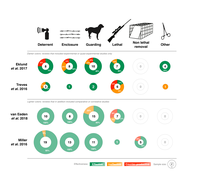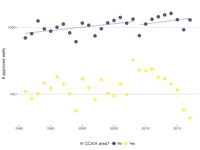State ESAs
Under the North American model of wildlife management, states take the lead on managing many species. Whether states have the laws and regulations needed to protect imperiled species is a question open to debate. Here, we provide quick and easy …
Carnivore conservation needs evidence-based livestock protection
Carnivore predation on livestock often leads people to retaliate. Persecution by humans has contributed strongly to global endangerment of carnivores. Preventing livestock losses would help to achieve three goals common to many human societies: …